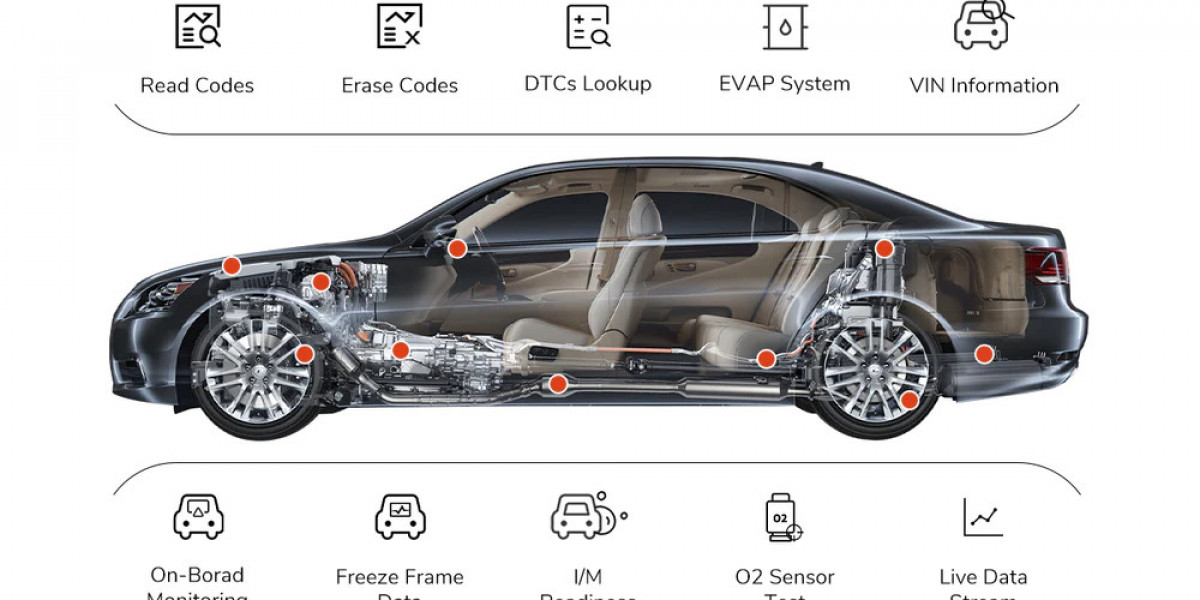OBD2, or On-Board Diagnostics 2, is a standardized system used in vehicles to monitor and report various aspects of the car's performance. It was introduced to provide a unified way of detecting and diagnosing problems that could affect emissions, performance, and overall efficiency.
Importance of OBD2 Codes
OBD2 codes serve as a language that your car uses to communicate its issues. These codes, also known as Diagnostic Trouble Codes (DTCs), are invaluable in identifying the root cause of problems, making it easier for both car owners and mechanics to pinpoint and resolve issues effectively.
The Role of ANCEL Scanners
What is an ANCEL Scanner?
ANCEL scanners are handheld devices designed to interface with your car's OBD2 system. These scanners can retrieve and interpret OBD2 codes, providing users with valuable insights into their car's health and performance.
Benefits of Using ANCEL Scanners
Using an ANCEL scanner offers several benefits, such as saving time and money. By quickly identifying issues, car owners can address problems before they escalate, potentially preventing more extensive and costly repairs down the road.
How OBD2 Codes Work
Code Structure and Components
OBD2 codes are alphanumeric combinations that provide specific information about a detected issue. The code structure consists of a letter (indicating the system) followed by four numbers (identifying the specific issue).
Reading OBD2 Codes
When a problem is detected, the car's computer generates a code and triggers the check engine light. ANCEL scanners can read these codes, allowing users to access detailed information about the problem.
Interpreting Code Severity
Not all codes are equally severe. Some indicate minor issues, while others point to more critical problems that require immediate attention. ANCEL scanners often provide severity information to help users determine the urgency of the situation.
Common OBD2 Codes and Their Meanings
P0xxx - Powertrain Codes
Powertrain codes relate to issues within the engine, transmission, and emissions systems. They provide insights into fuel efficiency, exhaust emissions, and overall performance.
C0xxx - Chassis Codes
Chassis codes deal with components related to steering, suspension, and braking systems. These codes help diagnose problems affecting the car's handling and safety.
B0xxx - Body Codes
Body codes focus on issues with the vehicle's interior, exterior, and various electrical systems. They cover everything from airbags to power windows.
U0xxx - Network Codes
Network codes indicate problems within the car's communication systems, including sensors and modules that exchange information. These codes are vital for diagnosing connectivity issues.
Troubleshooting with ANCEL Scanners
Connecting the Scanner to Your Car
Using an ANCEL scanner is simple. Plug the device into the OBD2 port, usually located beneath the dashboard near the steering column.
Retrieving and Understanding Codes
Once connected, the scanner can retrieve the codes triggered by the check engine light. ANCEL scanners often come with databases or online resources to help users interpret the codes.
Clearing Codes vs. Fixing Issues
While ANCEL scanners can clear codes, it's essential to address the underlying problems causing the codes to appear. Ignoring the root cause could lead to recurring issues.
Importance of Regular Maintenance
Preventing Costly Repairs
Regularly using an ANCEL scanner for diagnostic checks can catch problems early, preventing minor issues from escalating into major and expensive repairs.
Ensuring Vehicle Safety
By addressing issues promptly, you ensure your vehicle remains safe to drive. Malfunctions in critical systems can compromise your safety and that of others on the road.
Enhancing Your Car Diagnostics Skills
Learning About Freeze Frame Data
Some ANCEL scanners provide freeze frame data, capturing a snapshot of the vehicle's condition when the code was triggered. This data can provide additional context for diagnosing the issue.
Using Live Data Stream
Live data stream allows you to monitor real-time data from various sensors in your car. This feature can help diagnose intermittent issues that may not trigger a code.
The Evolution of OBD Systems
From OBD1 to OBD2
OBD2 is the successor to OBD1, offering standardized codes and improved diagnostic capabilities. OBD2 systems can detect a broader range of problems and provide more detailed information.
OBD3 and Beyond
As technology advances, OBD systems continue to evolve. OBD3 is on the horizon, expected to offer even more advanced diagnostics and predictive maintenance features.
DIY vs. Professional Assistance
When to Use an ANCEL Scanner Yourself
For minor issues or routine checks, using an ANCEL scanner yourself can save time and money. It's an excellent tool for staying proactive about your car's maintenance.
Consulting a Mechanic
For more complex problems or if you're unsure about the issue, consulting a professional mechanic is recommended. They have the expertise to accurately diagnose and repair complex issues.
Staying Informed About Updates
Keeping Software and Databases Current
As technology advances, OBD2 databases and scanner software receive updates. Regularly updating your ANCEL scanner ensures accurate and up-to-date diagnostics.
Importance of Firmware Updates
Firmware updates for ANCEL scanners can enhance their performance, add new features, and improve compatibility with a wide range of vehicle models.
The Future of Car Troubleshooting
Integration with Telematics
Future car diagnostics may integrate with telematics systems, allowing real-time monitoring and remote diagnostics. This could revolutionize how car issues are addressed.
Predictive Maintenance
Advanced analytics could enable predictive maintenance, where your car alerts you to potential issues before they cause a breakdown, enhancing both convenience and safety.
FAQs (Frequently Asked Questions)
Is it necessary to address all OBD2 codes immediately? While not all codes indicate critical issues, addressing them promptly is recommended to prevent potential problems.
Can I use an ANCEL scanner with any car model? ANCEL scanners are compatible with a wide range of vehicles, but it's essential to check for compatibility before purchasing.
Do OBD2 codes provide information about wear and tear? OBD2 codes primarily focus on identifying malfunctions and issues within various systems, rather than wear and tear.
Are there free resources for interpreting OBD2 codes? Yes, many online resources provide explanations for OBD2 codes, helping car owners understand their meanings.
How often should I perform OBD2 diagnostic checks? Performing OBD2 diagnostic checks during routine maintenance, such as oil changes, can help you stay ahead of potential problems.
Conclusion
In today's automotive landscape, understanding OBD2 codes is vital for effective car maintenance. ANCEL scanners provide car owners with the tools they need to decode their vehicle's troubles and address them promptly. By harnessing the power of OBD2 technology, you can enjoy a smoother and safer driving experience.








